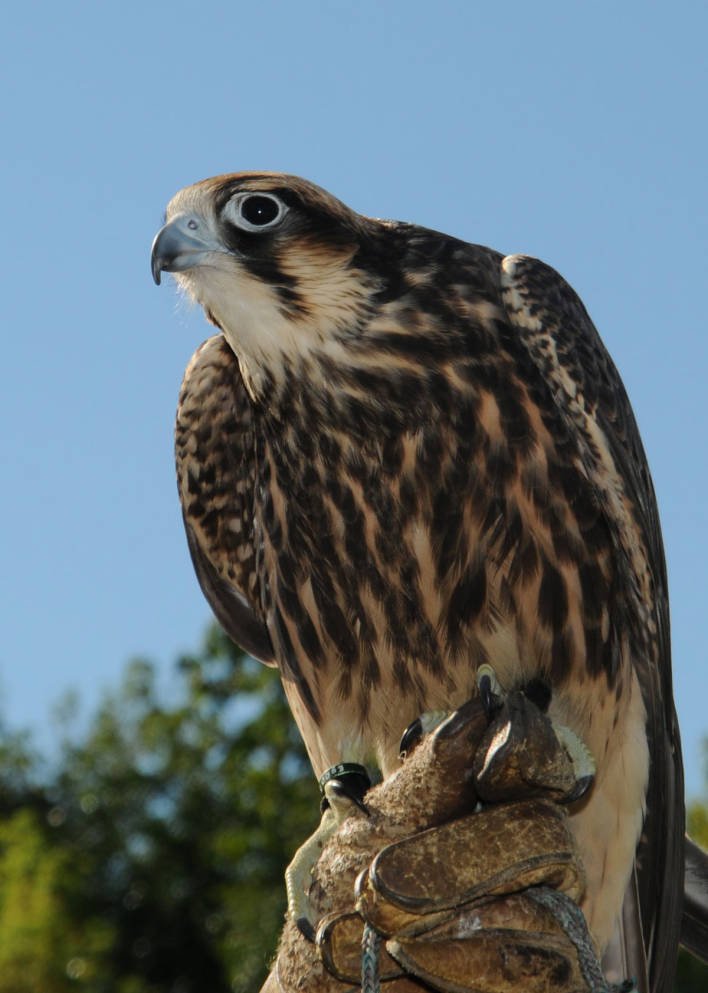Throughout history, humans have employed falcons as lethal hunters of other animals. Now those raptors are being sent after drones.
It turns out that many of the skills the feathered predators use to find tasty lunches can be applied to the developing field of drone defense. A U.S. Air Force-funded study by zoology researchers at Oxford University suggests that the means by which a peregrine falcon tracks its quarry could be effective in defending against drones that threaten troops, police or airports.
The researchers fitted the falcons with miniature video cameras and GPS receivers to track their angle and method of attack on other birds, or on bait being towed through the air by a drone. In a paper recently published in the Proceedings of the National Academy of Sciences of the U.S., a falcon's approach to intercepting its target aligned closely with the rules of proportional navigation, a guidance system used by visually directed missiles.
The principle is such that a missile -- or a falcon on the hunt -- will reach a target as long as its line of sight remains unobstructed while it closes in. The earliest AIM-9 Sidewinder heat-seeking missiles, dating to the 1950s, used this technique with a rotating mirror to "see" the target.
A key difference is that falcons adjust their angle of attack to compensate for their slower speeds -- which is where drones come in. The work, the researchers suggested, could be applied to the development of small, visually guided drones that can disable other drones.
"We think that the finer details of how peregrines operate could certainly find application in small drones designed to remove other drones from protected airspace," professor Graham Taylor, the principal investigator, wrote in an email. The research involved data from 55 attack flights in Wales with falconers and a certified drone operator.
For soldiers on the battlefield and even law enforcement officers at home, the threat of drone attack has grown as every day passes, as has a desire for a working defense. In July, the Pentagon authorized 133 U.S. military installations to shoot down private or commercial drones that threaten their airspace.
Cheap, small drones have become a handy weapon for militants, and the Defense Department is working to field new technology and techniques to protect troops and equipment.
The application to drone defense "emerged naturally through the course of the study" given research by several police forces to eliminate drones using trained raptors, the authors said. Police in the Netherlands, for example, have studied whether eagles can be an effective means to capture and disable small drones.
"The problem with this approach is that raptors are only motivated to chase targets if they are hungry or defending a territory, and spinning rotor blades pose as much of a threat to a birds' talons as they do to our own fingers," Taylor wrote in an email. "Keeping a defense team of hungry raptors on call isn't practical, and flying them at large multi-rotors isn't ethical." (The Air Force didn't immediately return a request for comment.)
SundayMonday on 12/10/2017
